London Group members Alex Harley and Paul Bonomini on the pleasures of sharing a studio

Alexandra Harley
An offer of a workbench in my studio for a fortnight when Paul needed space to prepare for a show lasted six weeks……three months……he has not moved out 5 years later! I had not shared my studio for many years, I enjoy the privacy, the opportunity to make mistakes -technical and aesthetic- without anybody else laughing. Expecting just a few days of change was not going to be a problem. Paul and I knew each other quite well through Morley College and I knew he would be an easy studio mate; he gets on so well with everyone. And just for the record the show was excellent, so I am delighted I played a part in making that happen.
There is no mistaking whose bench is whose. Our making is wildly different and at opposite ends of the spectrum. Paul’s space is tidy and clean….and mine is not. I have multiple projects on the go with all the necessary tools out and I only sweep up when the space has become a health hazard. However, despite the differences we continue to get on well, discussing shows, sharing resources and our hugely different aesthetic is extremely helpful in our crits. We get on so well in fact, that we are looking to continue sharing after we are rehoused when our Acme tenancy runs out.
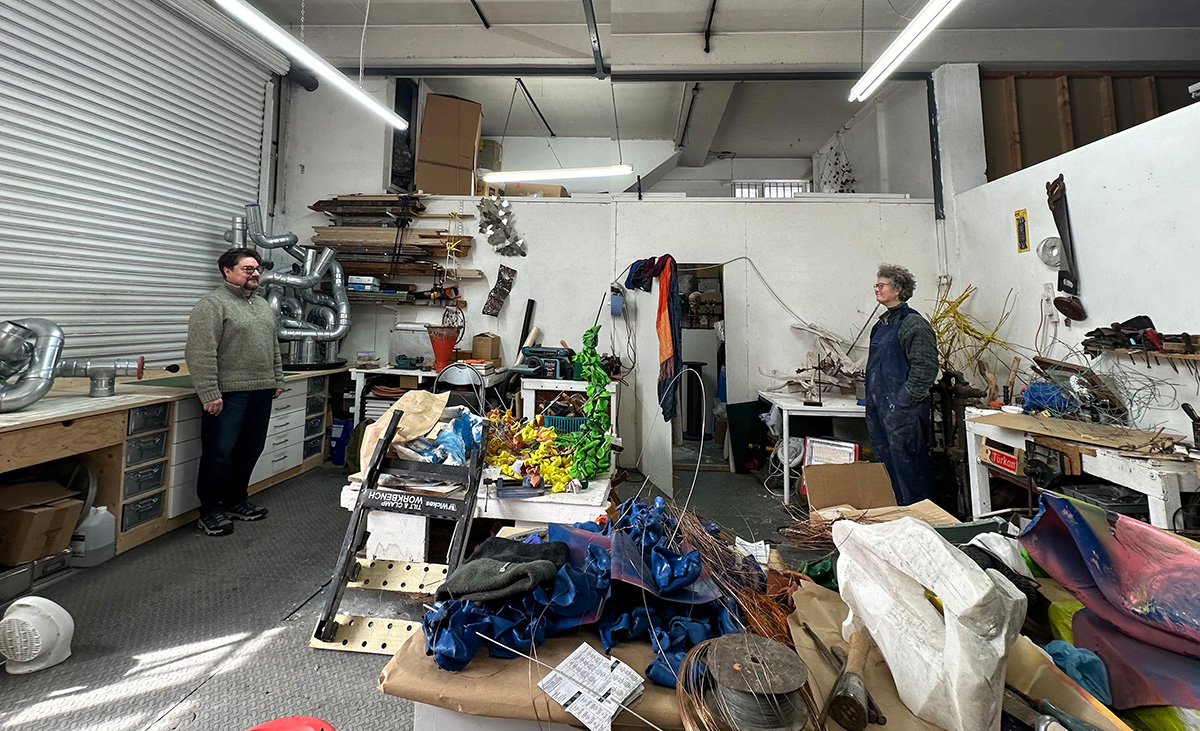
Paul Bonomini
Without the offer of a workbench and the enthusiastic support and encouragement of my friend and colleague Alex, I would not have been able to make my sculpture ‘Stakkr’, which featured in the 2019 London Group Open show and was selected by Susan Haire (thank you Susan) for the President’s Prize, ultimately leading to my joining the group. I can honestly say this is in large part thanks to Alex whose advice and critical comment I value highly.
I, like Alex occasionally enjoy the solitude, time to think and explore current ideas, but I am as she says a naturally social animal and find our sculptural encounters both stimulating and productive. Both the way in which we work, and the resulting artistic output could not be more dissimilar, but it is this that adds strength and meaning to our discussions and the work we produce.
Alex Harley LG and Paul Bonomini LG, 2024
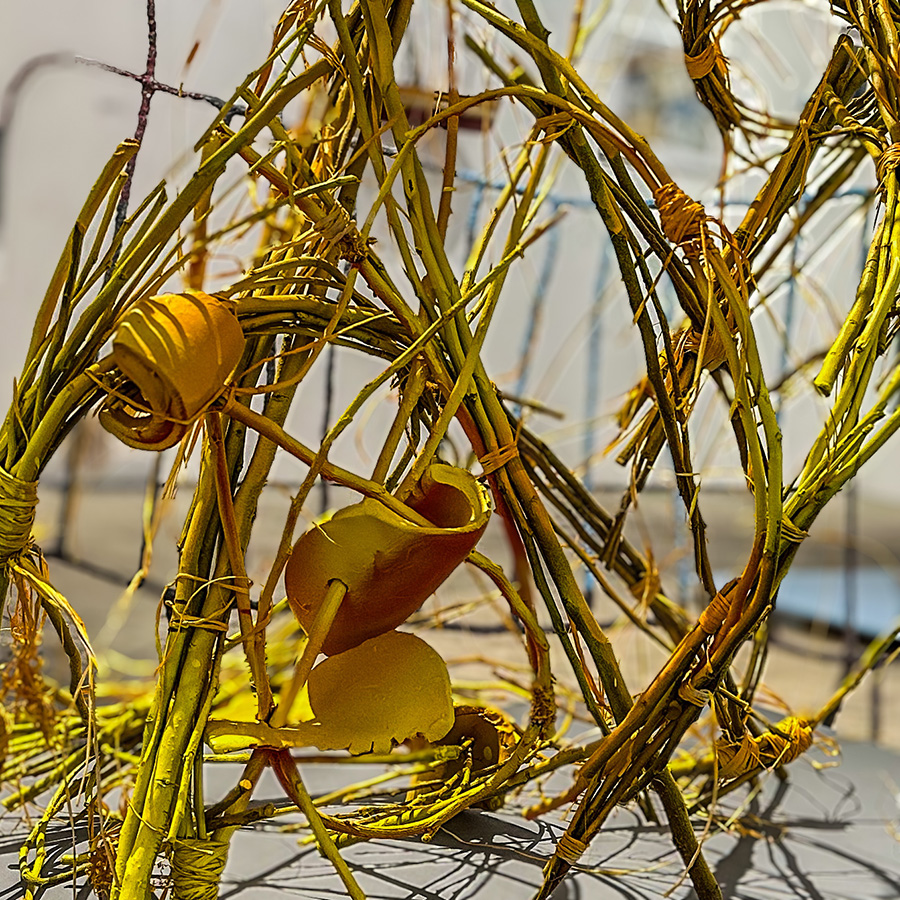
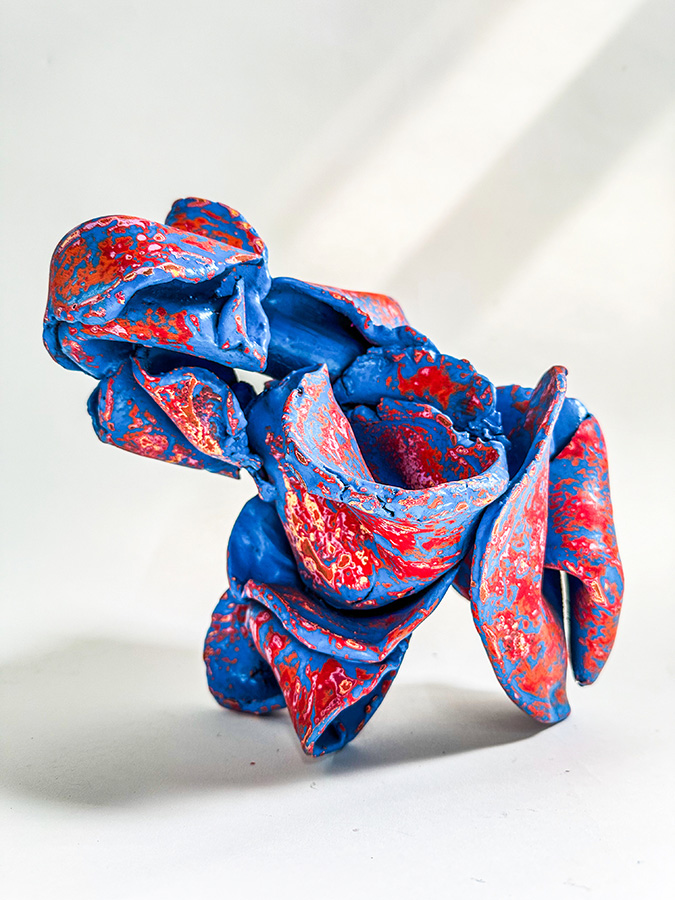

Alexandra Harley uses a variety of different materials – mostly wood, but also stone, clay, and paper – to explore the concept of movement in non-kinetic sculpture. The natural components of the materials inform the constructed sculptures, for example, splitting wood along the grain to discover its own rhythms and movements, and working with these to re-create and generate the energy and vibrancy of the initial inspiration. Raw edges and tool marks are intentional, to contrast with the natural, deliberately unrefined splits and the other areas that have been smoothed.
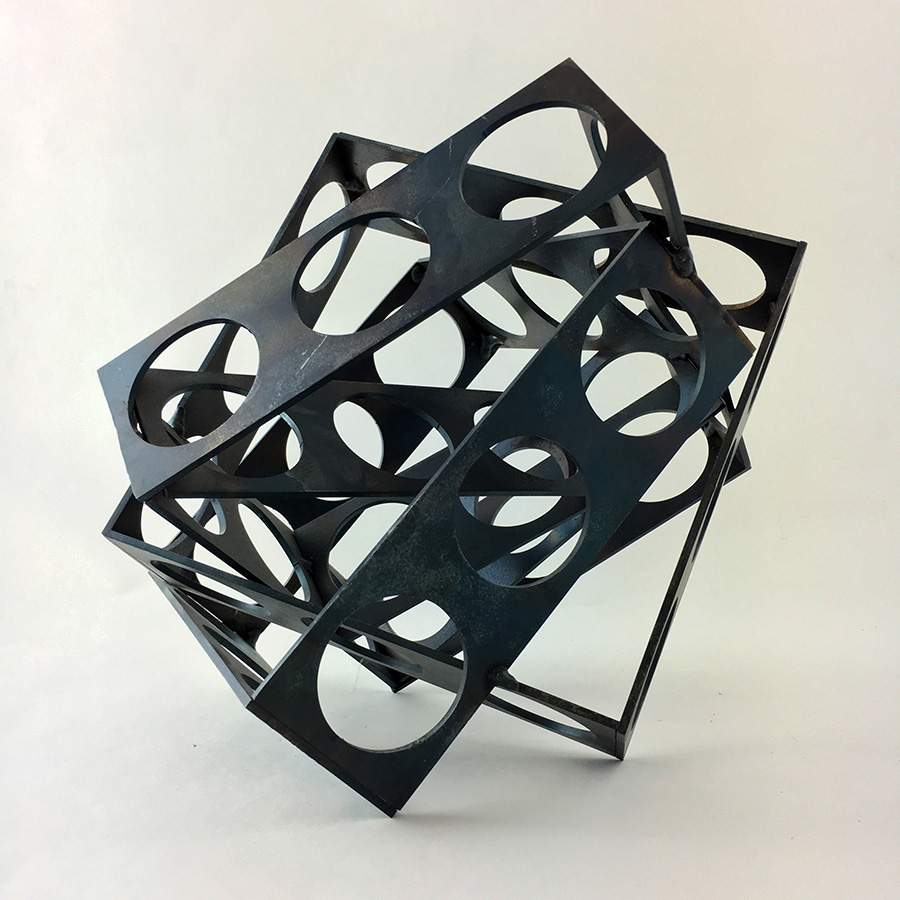
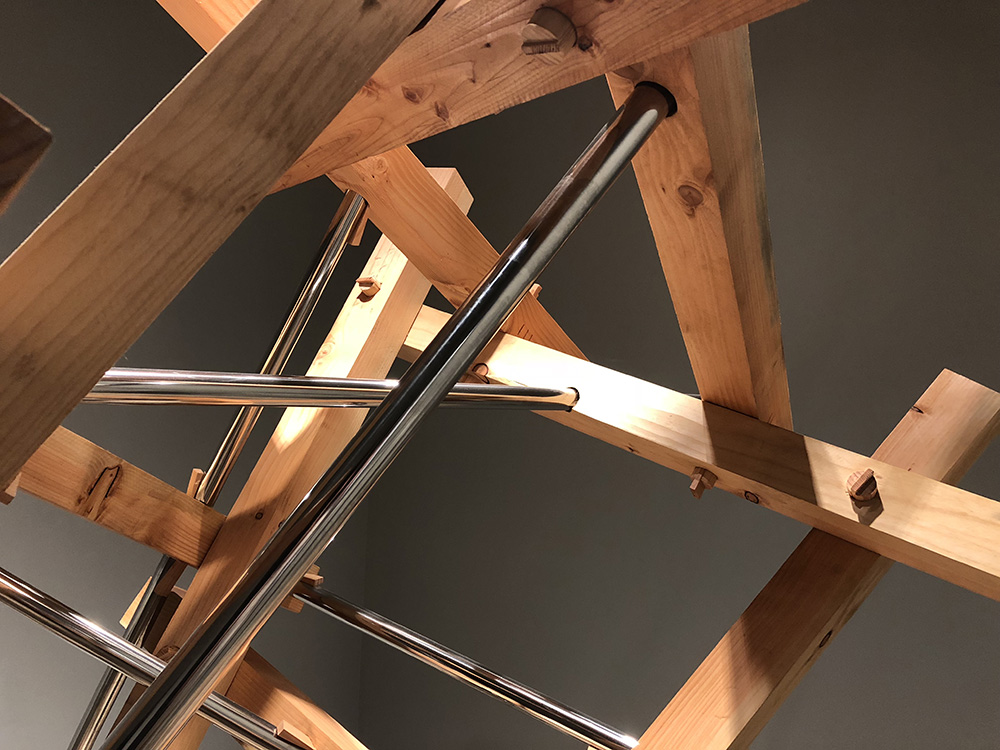
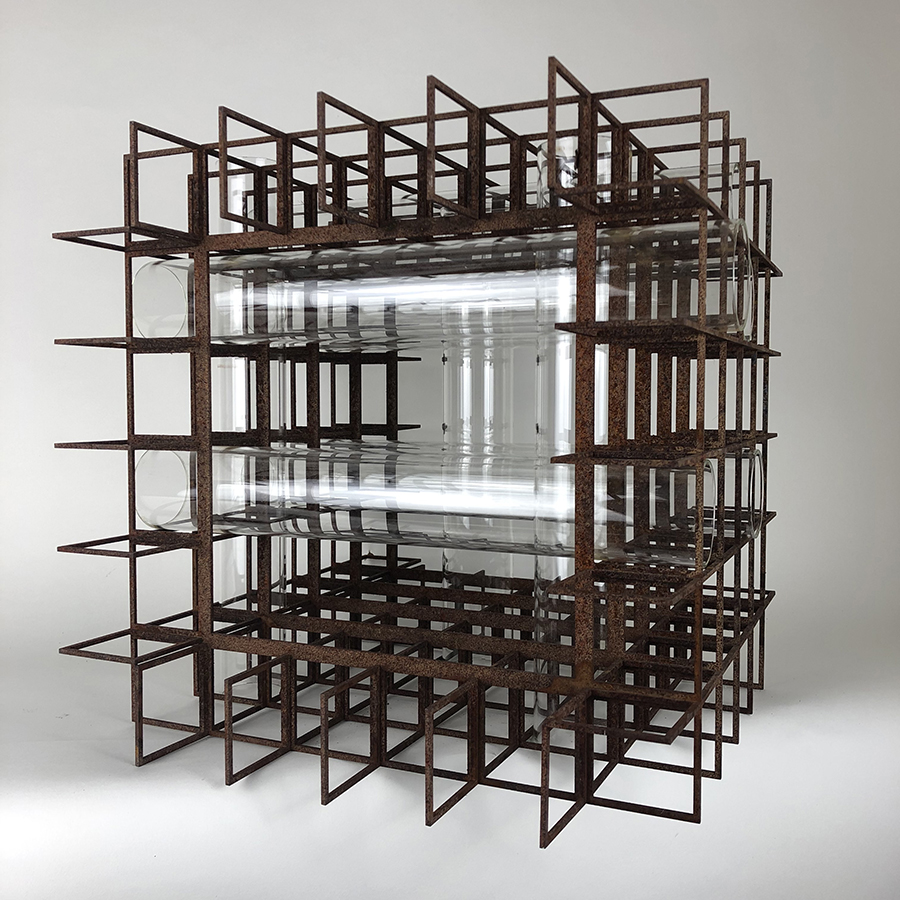
Paul Bonomini’s work is driven by process; casting, forging and constructing pieces in a range of materials, including bronze, iron, concrete, glass, steel and more recently, 3D-printed plastics. One ongoing strand of artistic investigation explores the beauty and symmetry of The Platonic Solids, particularly the form of the cube, and interrogates the relationship between the human body and our physical environment.
